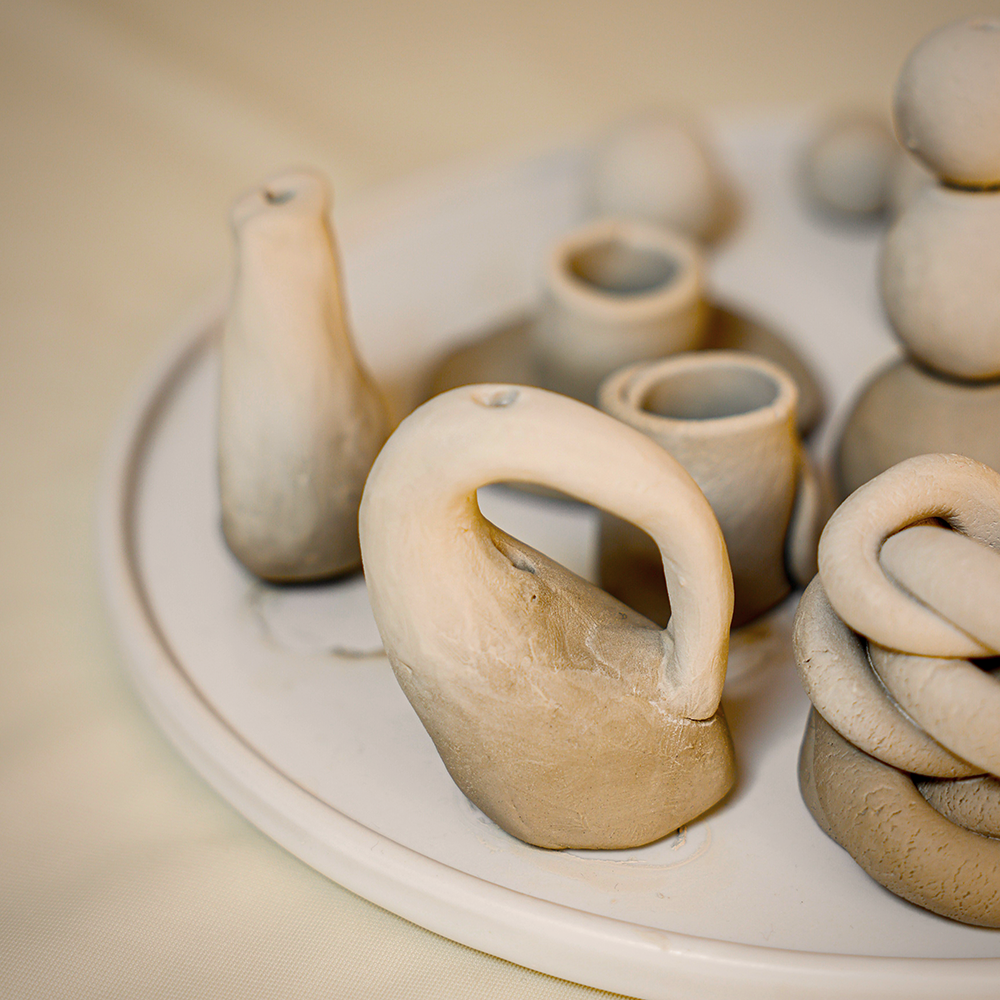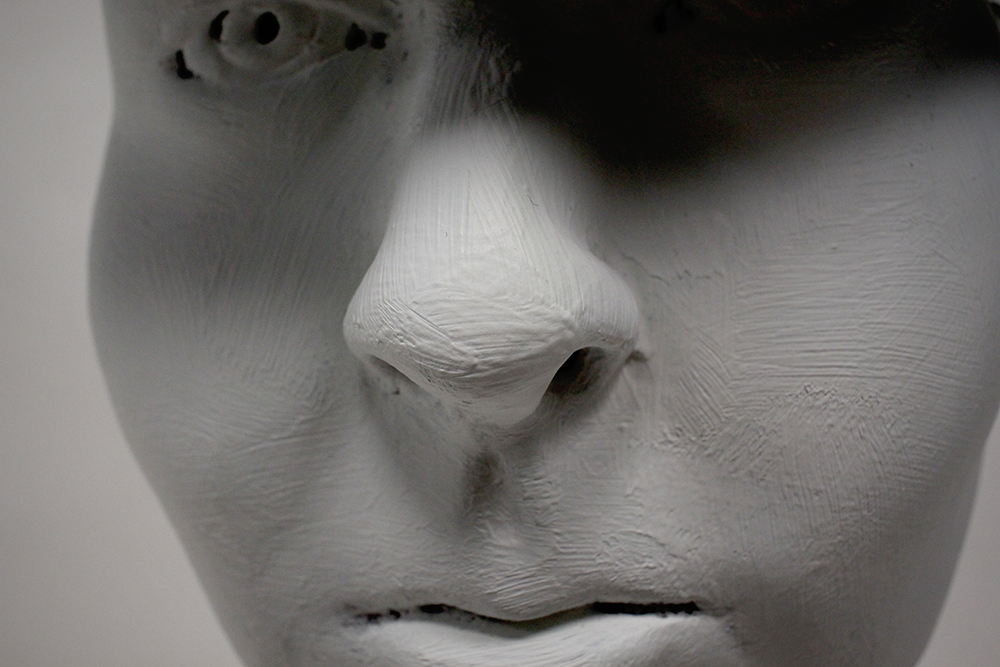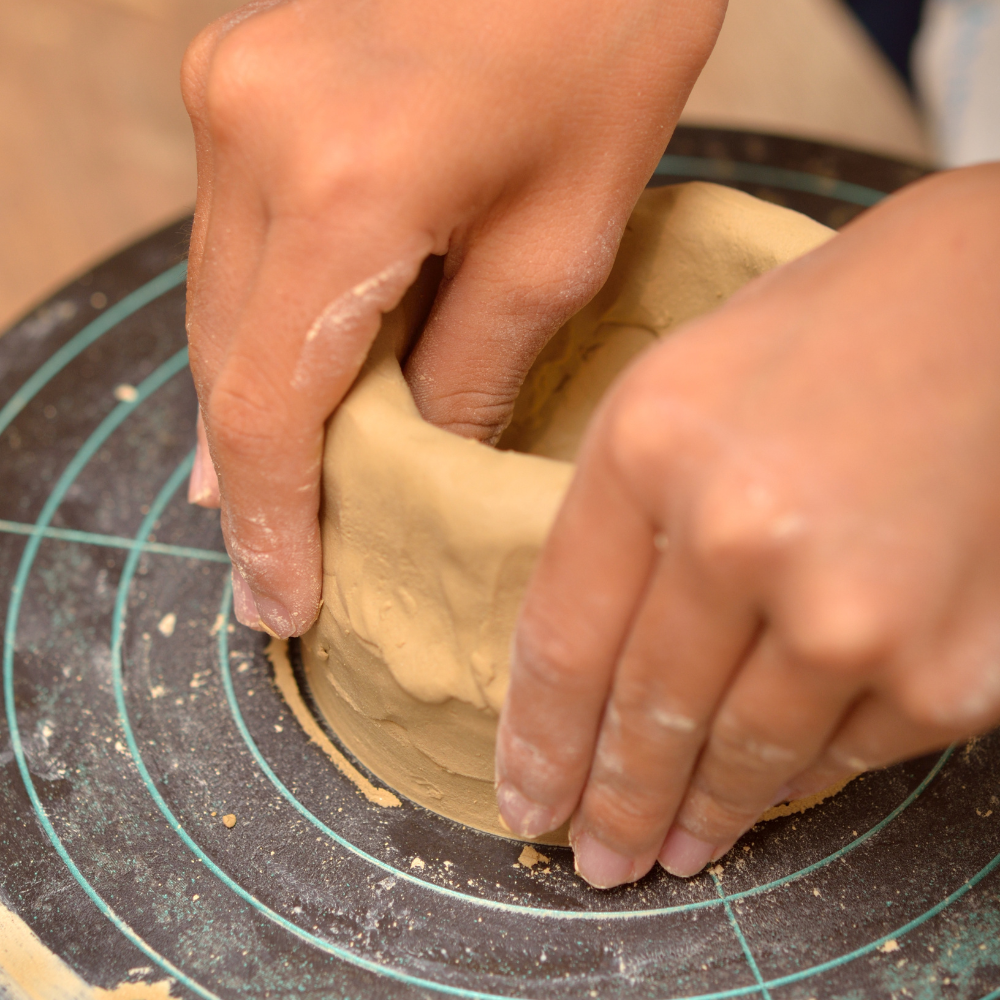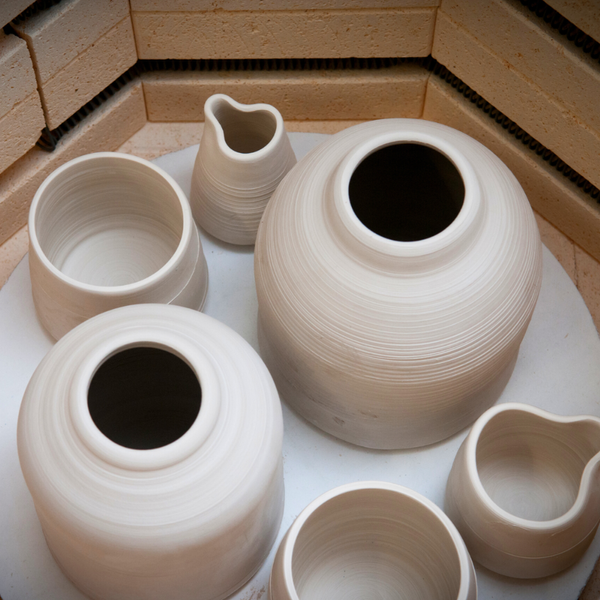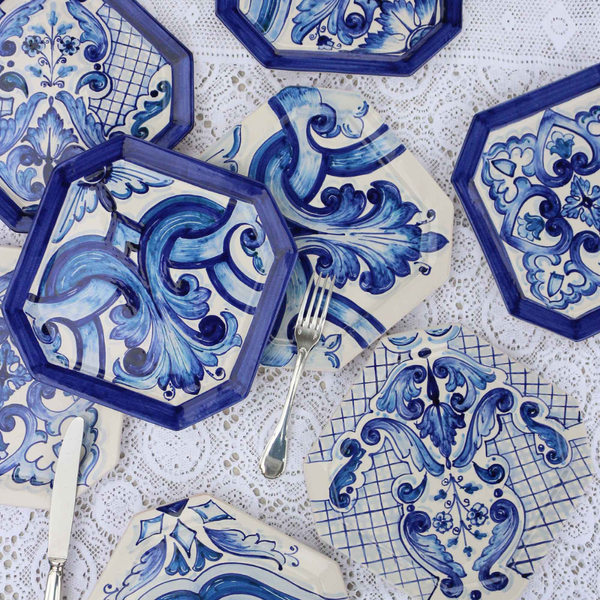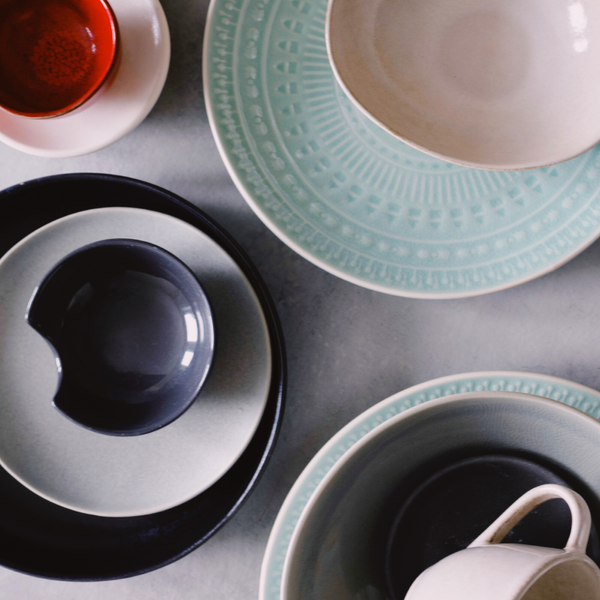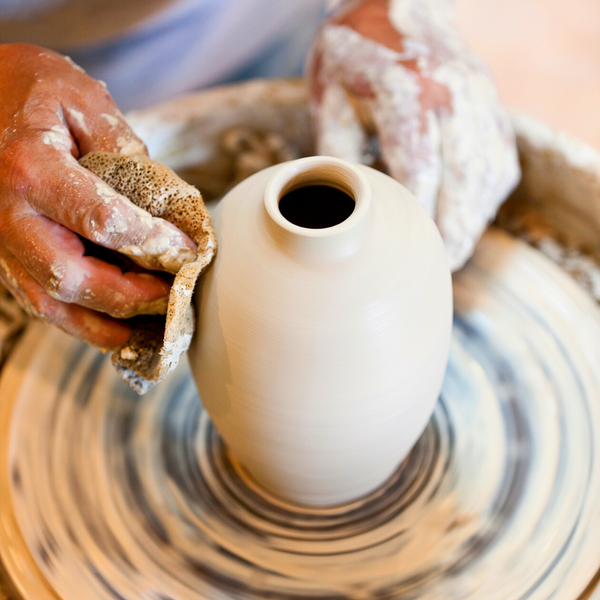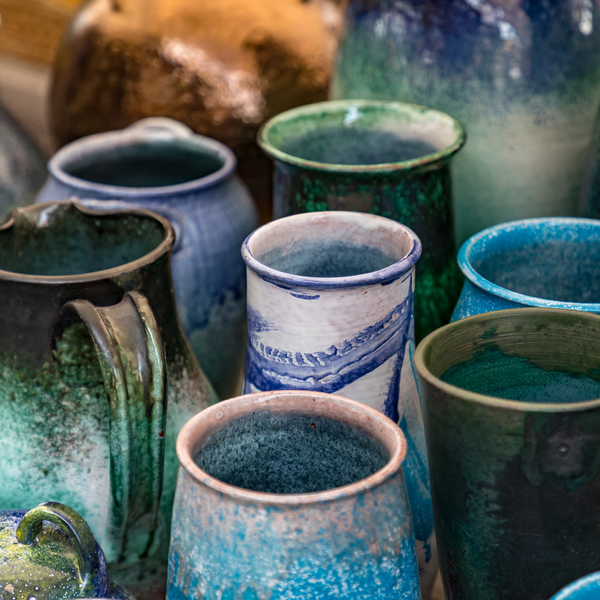Ever had a glimpse of a beautifully sculpted pottery piece and wonder how in the world someone crafted it with their bare hands?
If you've ever felt intimidated by the idea of hand sculpting delicate clay with your fingers, handbuilding pottery may seem difficult, but it's actually quite accessible and rewarding for creators of all types.
The techniques and intricacies that go into handbuilding pottery have fascinated people for centuries.
While it may look effortless in the hands of a master potter, handbuilding takes practice, patience, and a willingness to get your hands dirty.
But for any creative soul looking to try their hand at this rewarding craft, I'm here to tell you that handbuilding with clay doesn't have to be hard.
From ceramic mugs and bowls to whimsical sculptures, clay has a way of transforming under our touch that's both meditative and magical.
In this post, we'll take a hands-on look at different handbuilding techniques including coils, slabs, and pinching, along with some ceramics tips and tricks to help overcome common hurdles.
By the end, I hope to inspire you to pick up a lump of clay and explore the world of creative possibilities right at your fingertips.
Let's get started on a journey into the magical world of ceramics and get our hands dirty!
Key Takeaways:
- Handbuilding pottery is accessible to beginners but mastering it requires practice and skill.
- There are various hand building techniques, each with its own set of challenges and rewards.
- Understanding the basic principles and having the right tools can simplify the handbuilding process.

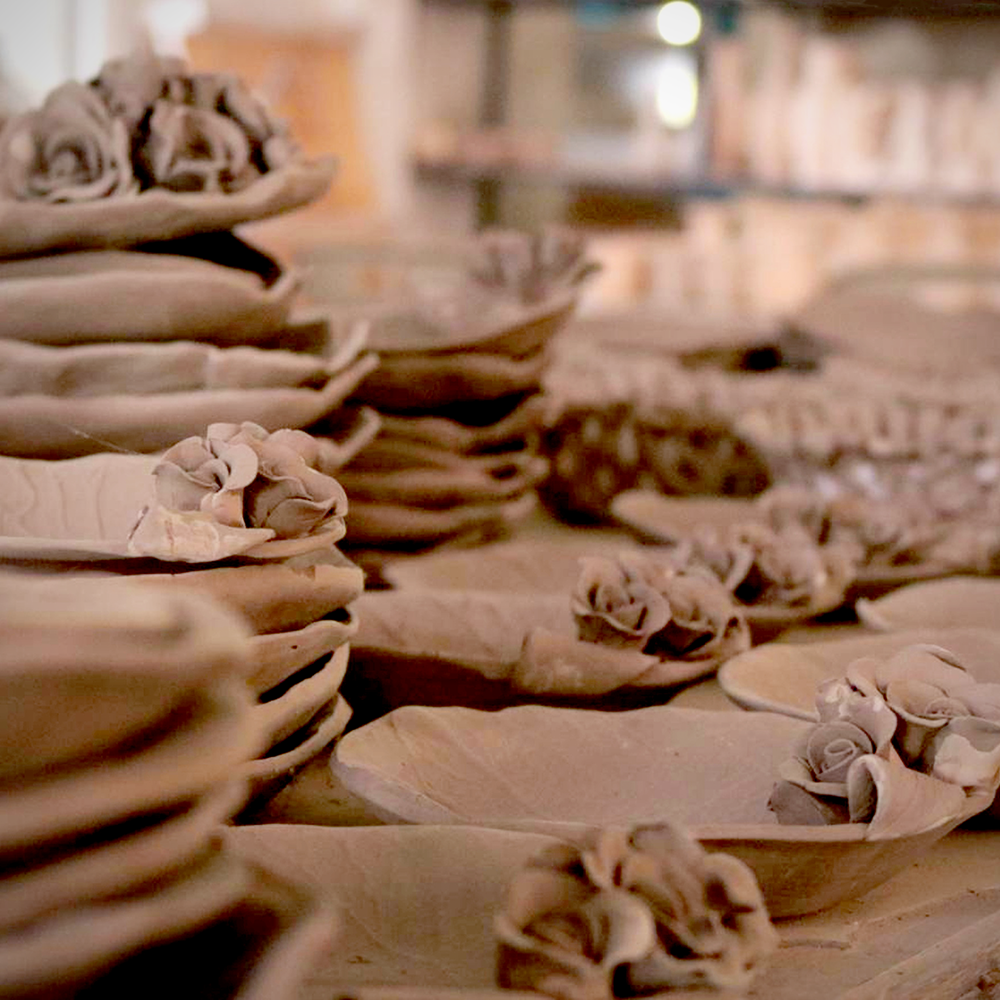
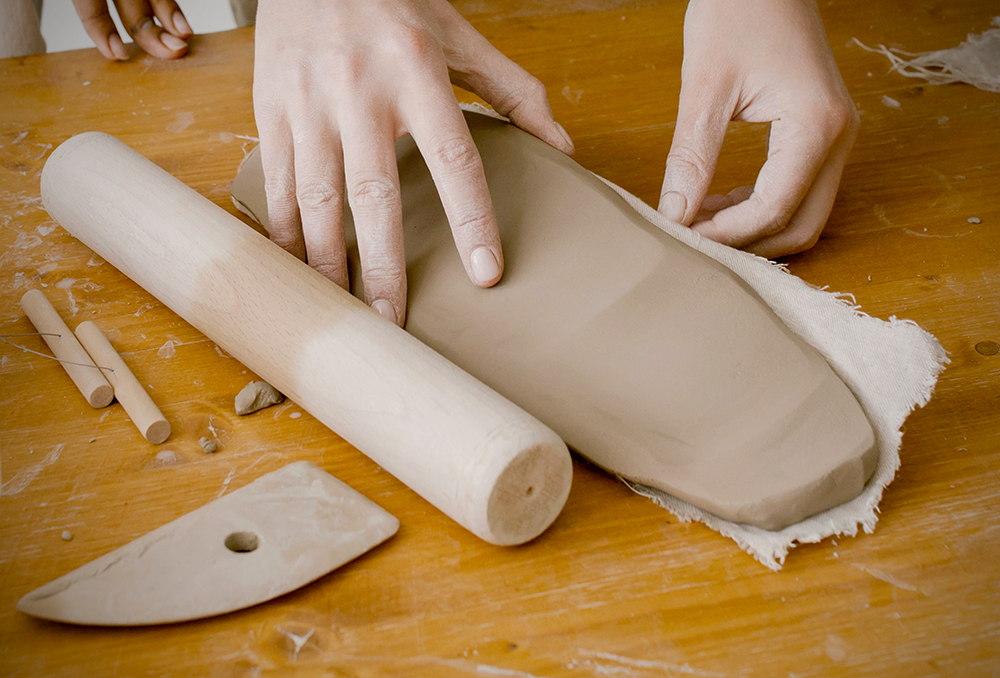
Ceramics and Pottery 101
Pottery has been a form of art and craftsmanship for thousands of years, with evidence dating back to the prehistoric era.
It involves creating pottery pieces without the use of a pottery wheel, relying instead on the most basic tools: your hands.
Ceramics and clay have been used for practical purposes, spiritual rituals, and even as a form of currency.
Fast forward to today, pottery remains a beautiful art form and a way to express creativity.
With no age limit, pottery has become an increasingly popular recreational activity for individuals of all ages.
Even children can enjoy the wonders of handbuilding pottery, making it a great family activity.
To create a beautiful piece of handbuilt pottery, you need to have an understanding of the material you're working with - clay.
Clay is a natural resource that consists primarily of fine-grained minerals. It's incredibly versatile and can be molded into various shapes.
It also has a "memory" which means that it can remember its original form and will shrink or expand depending on temperature changes.
This is why clay must be fired in a kiln at high temperatures to make it strong, durable, and water-resistant.
The type of clay you choose will depend on the desired outcome - earthenware, stoneware, or porcelain.
Each type has its own characteristics and requires specific handling and firing techniques, so be sure to choose the appropriate clay for your project.
Once you've selected your clay, it's time to roll up your sleeves and start handbuilding!
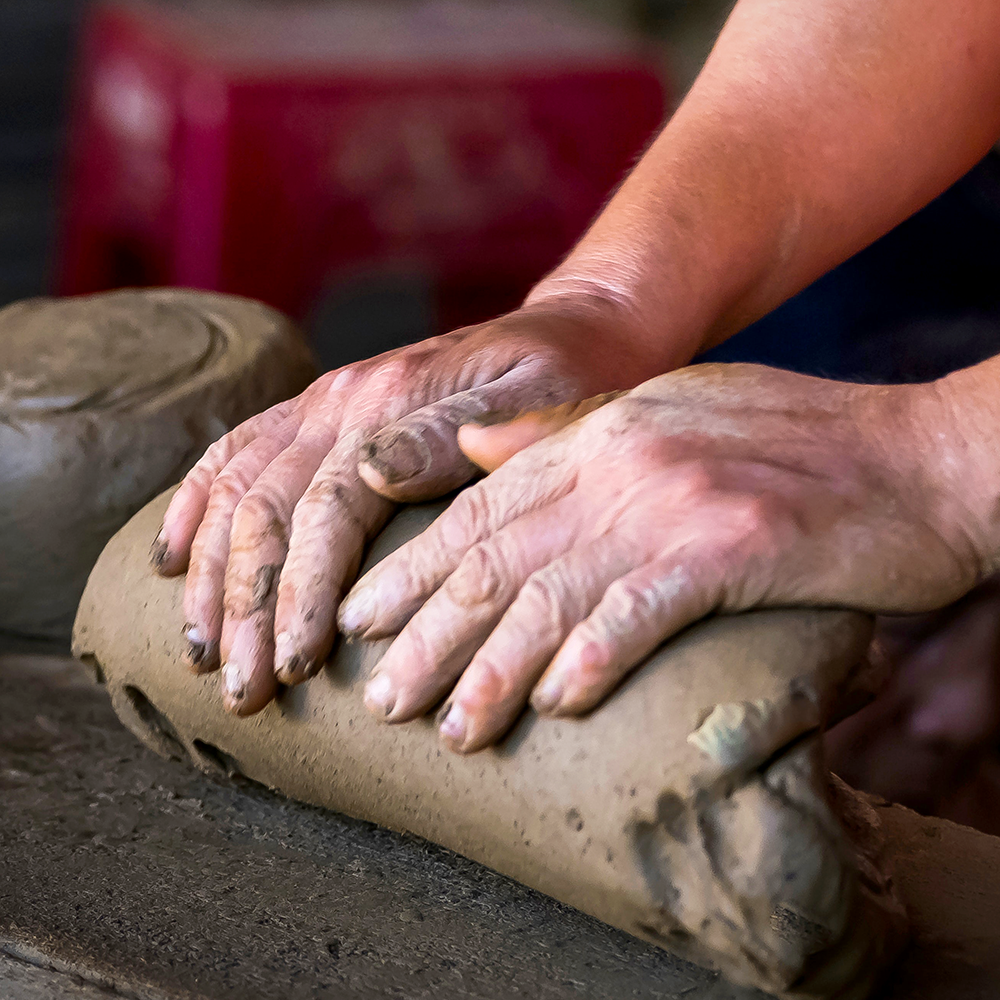

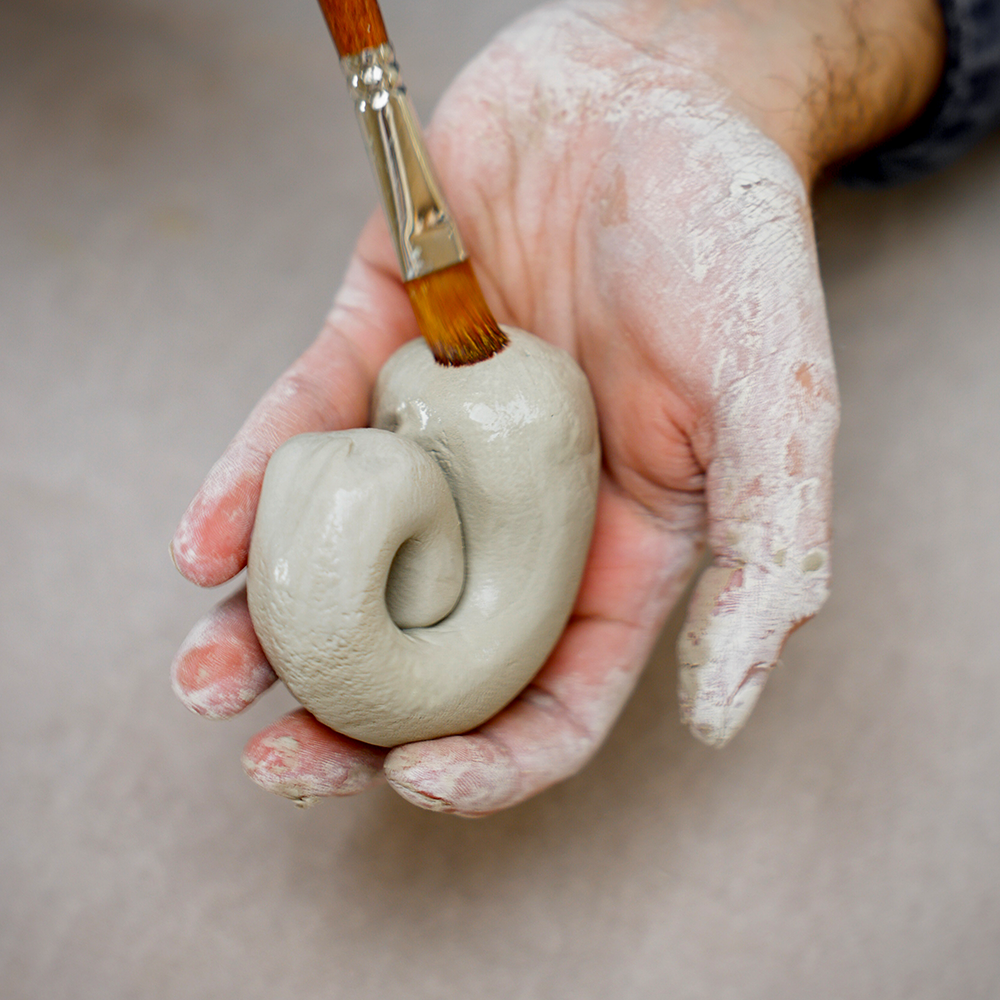
Understanding Handbuilding Techniques
Handbuilding is a broad term that encompasses several techniques, each with its own unique set of skills.
The three primary methods are pinch pots, coil building, and slab construction.
Pinch pots are formed by pinching the clay into the desired shape, starting from a ball of clay.
Coil building involves rolling out long strands of clay, called coils, and layering them to build up the walls of the pottery.
Slab construction uses flat pieces of clay, known as slabs, which are joined together to create different shapes.
Pinch Pots: The Foundation of Handbuilding
Creating pinch pots is often where beginners start clay projects.
This method requires minimal tools and materials – just clay and your fingers.
The basic principle is to press your thumb into a ball of clay and then carefully thin out the walls by pinching with your thumb and fingers.
While it may sound simple, achieving uniform thickness and a pleasing form can be challenging.
However, this technique provides a solid foundation for understanding the properties of clay and how it responds to manipulation.
Coiling: A Time-Honored Technique in Handbuilding
Coiling is one of the oldest pottery techniques and remains a fundamental skill in hand built pottery.
This method involves rolling out long ropes of clay, known as coils, and gradually stacking them to build up the walls of a pot or sculpture.
The coiling technique is versatile and allows for a great deal of freedom in terms of shape and size, making it suitable for both functional items and artistic pieces.
It is a time-consuming process, as each coil must be carefully joined and smoothed to ensure the structural integrity and aesthetic quality of the final product.
Despite the labor-intensive nature of coiling, it is a deeply satisfying technique that offers a direct connection between the potter's hands and the clay.
The rhythm of rolling, placing, and blending coils can be meditative, allowing the artist to become fully immersed in the creation of their work.
Coiling is also an excellent way for beginners to find their footing in pottery, as it does not require the use of a throwing wheel and can be done with minimal tools.
The tactile experience of coiling can lead to a profound understanding of the clay's properties and the endless possibilities it holds for creative expression.
Coil building is a popular method for creating round objects and more complex forms.
It allows for more control over the shape and size of the pottery pieces.
The process can be time-consuming, as it involves rolling individual coils, scoring the edges, and blending them together to form the walls.
Achieving a smooth finish and preventing the coils from separating during drying and firing are common challenges.
Yet, with patience and practice, coil building can yield stunning results.

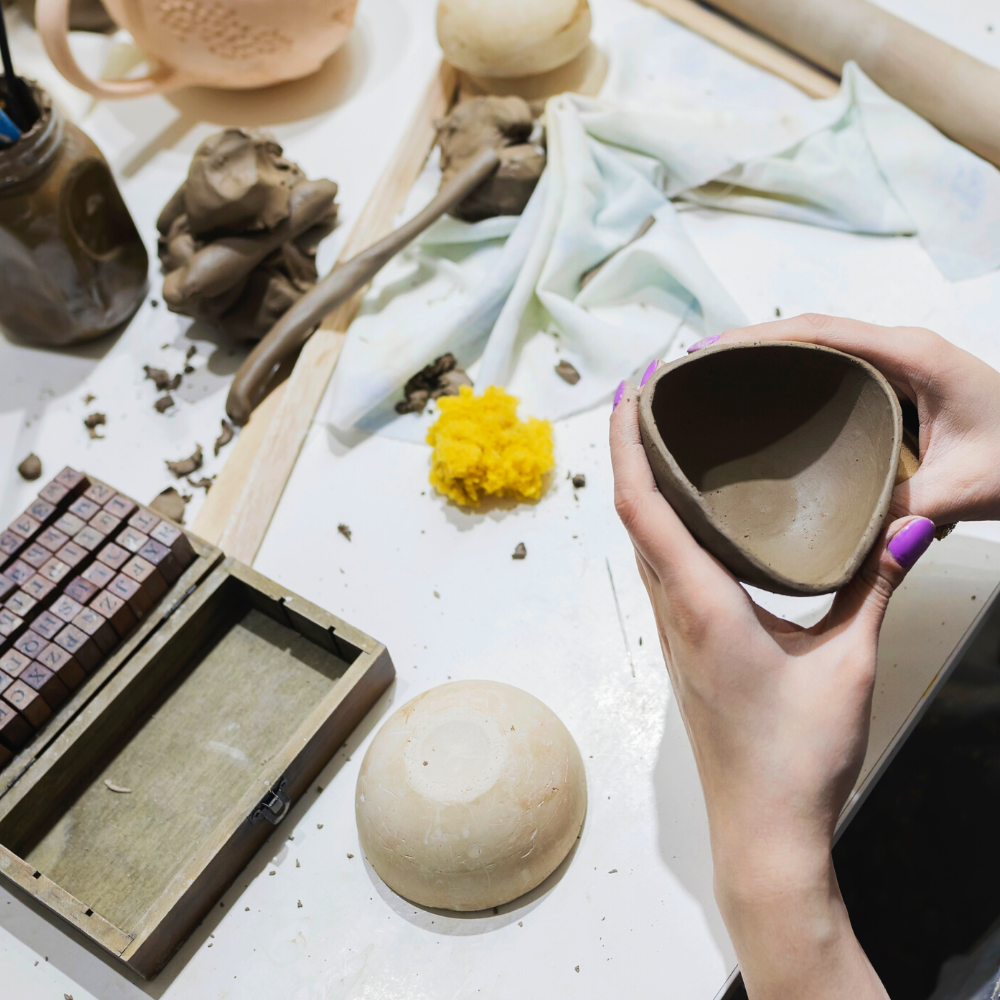

The Role of Slab Construction
Slab construction is another fundamental hand building technique.
It involves rolling out clay into slabs, either with a slab roller or a rolling pin, and then cutting and assembling the slabs into the desired form.
This method is ideal for creating geometric shapes and can be used to construct anything from simple boxes to intricate clay sculptures.
The difficulty lies in ensuring the slabs are of consistent thickness and that the seams are properly joined to avoid cracking.
Slab Rollers vs. Rolling Pins
When it comes to slab construction, the choice between using a slab roller and a rolling pin can make a significant difference.
A slab roller ensures uniform thickness and saves time, making it a valuable tool in a busy studio.
However, a rolling pin, while more labor-intensive, can be just as effective with practice. The key is to maintain even pressure and to frequently turn the slab to prevent warping.
The Precision of Slab Building in Pottery
Slab building is a method that requires meticulous attention to detail and a steady hand.
Unlike the potter's wheel, where clay is shaped by the centrifugal force as it spins, slab building involves rolling out clay into even slabs and then cutting and joining them to form structures.
This technique allows for the creation of geometric shapes and crisp edges that are often more challenging to achieve on a throwing wheel.
The precision of slab building makes it ideal for creating large-scale works or pieces with a more architectural feel, expanding the possibilities for hand built pottery.
The process of slab building can be time-consuming, as it involves careful measurement and planning.
Each slab must be rolled to a consistent thickness and dried to the correct stage of leather hardness before assembly.
This methodical approach is a sign of the potter's dedication to their craft, as they sculpt and assemble the body of the piece.
Slab building also allows for the incorporation of textures and patterns that can be imprinted onto the clay before it is shaped, adding another layer of intricacy to the project.



Wheel Throwing Techniques vs. Handbuilding
While handbuilding is versatile and allows for a wide range of forms, pottery throwing techniques offer a different set of advantages.
The pottery wheel, or potter's wheel, enables potters to create symmetrical and round objects with relative ease.
Spinning clay on the wheel requires a different skill set, including centering the clay and learning to control the speed of the wheel.
For some, the learning curve for wheel throwing may be steeper than handbuilding.
Beginners may find wheel throwing more challenging, as it requires a combination of skill and technique.
Wheel throwing also relies on the use of specific pottery tools such as ribs and trimming tools that may take time to get used to.
Finding Wheel Throwing Classes
For those interested in exploring wheel throwing techniques, pottery classes are a great resource.
Many studios offer beginner classes that cover the basics of throwing pottery on the wheel.
These classes provide hands-on experience and guidance from experienced potters, which can be invaluable for mastering the craft.
Plus, joining a class is an excellent way to meet other pottery enthusiasts and build a supportive community.
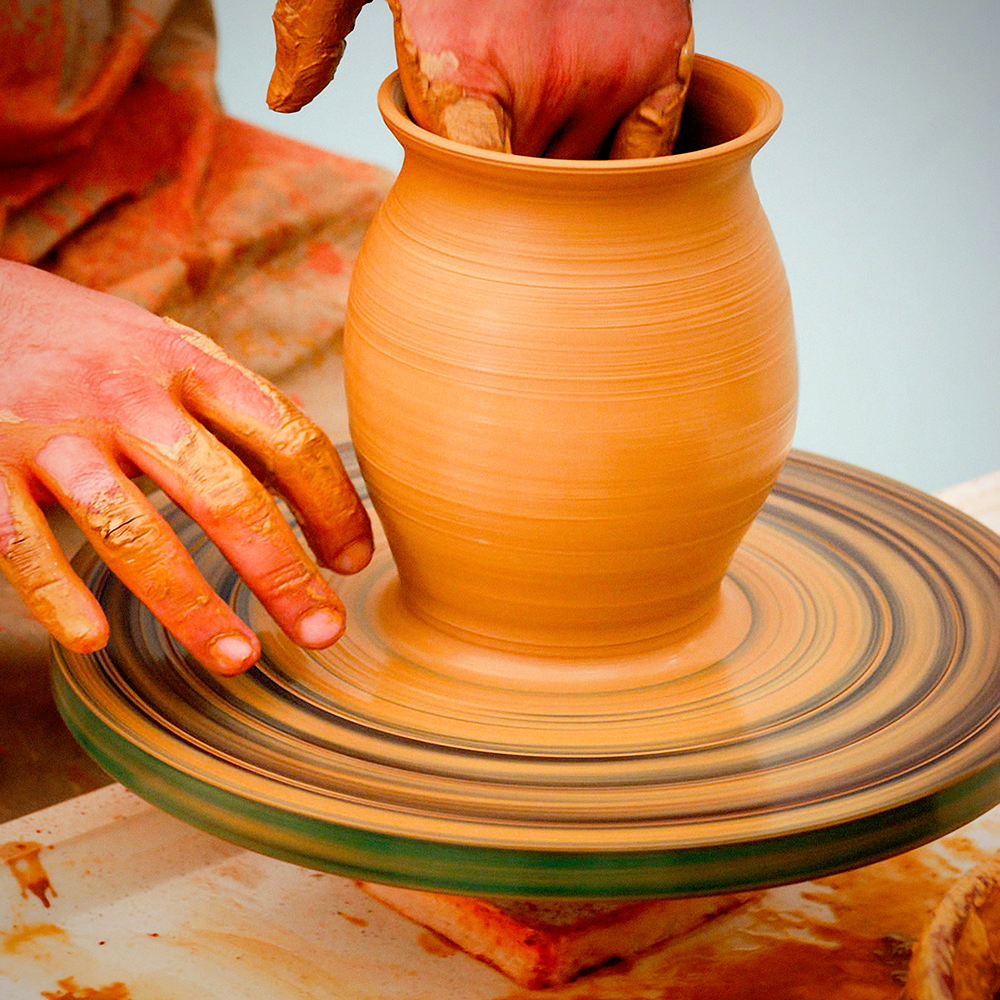
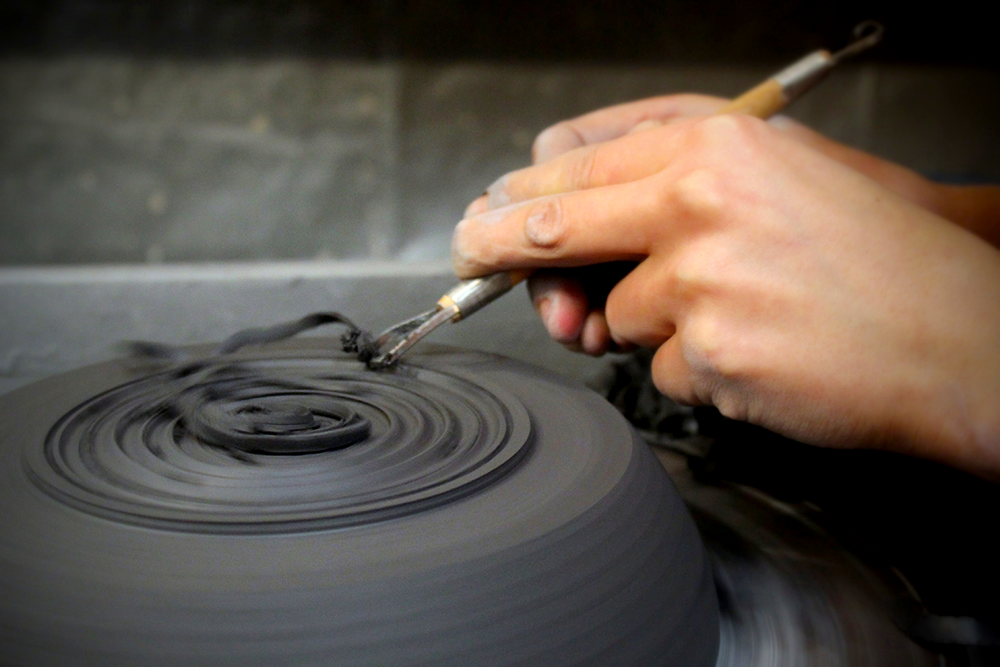
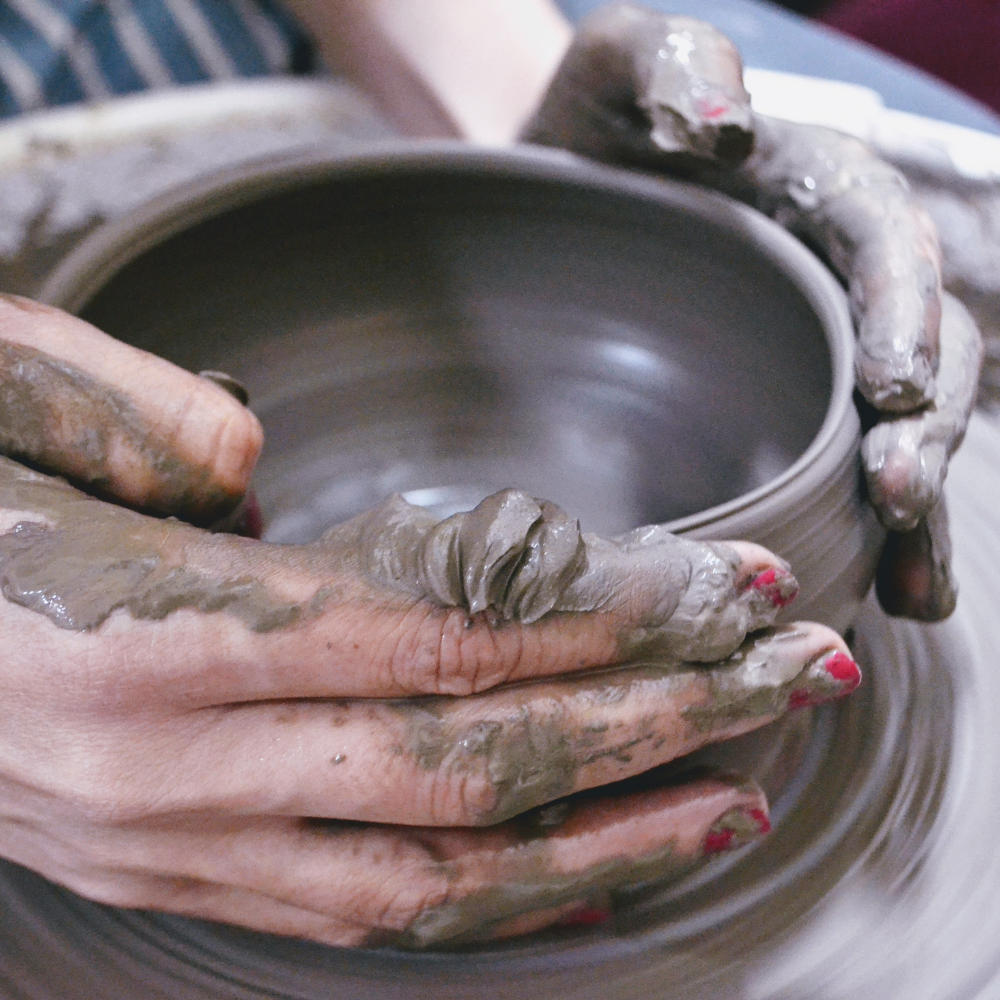
The Importance of Simple Tools
Handbuilding pottery does not require an extensive set of tools.
Simple tools like a rolling pin, a rib (a flat tool used to smooth clay), and a needle tool for scoring are often sufficient.
These tools help in adding finer details and achieving the desired texture.
The advantage of handbuilding is that it allows for a more direct interaction with the clay, giving the potter the ability to alter and adjust the form as they go.
The Role of Imagination and Creativity
One of the most appealing aspects of handbuilt pottery is the freedom it offers.
Unlike wheel throwing, which is often centered around creating round objects, handbuilding allows for an unlimited range of forms.
A potter's imagination and creativity are the only limits.
From abstract sculptures to functional dishware, handbuilding techniques can accommodate a wide variety of artistic expressions.
The Different Clays and Their Impact
Not all clays are created equal, and the type of clay used can greatly affect the handbuilding process.
Porcelain, for example, is a fine and smooth clay that is excellent for creating delicate pieces with intricate details.
Other clays, like stoneware or earthenware, may be more plastic and easier to work with for larger, more structural pieces.
Understanding the properties of different clays is crucial for successful handbuilding.
Porcelain: A Challenge for Handbuilders
Porcelain is known for its beauty and strength, but it can be particularly challenging for handbuilders.
Its fine particles make it less forgiving and more prone to cracking if not handled correctly.
However, for those willing to master its quirks, porcelain can produce exquisite hand built ceramics that are highly valued for their elegance and translucency.
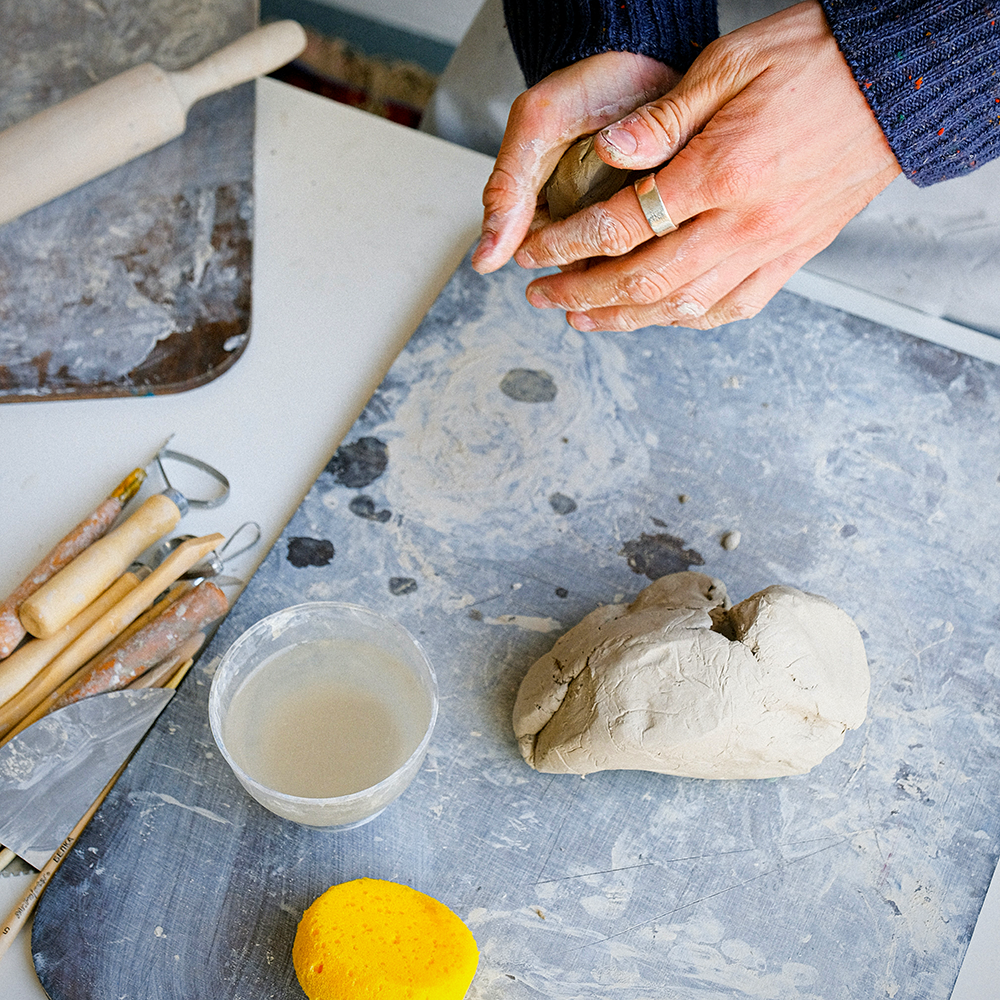

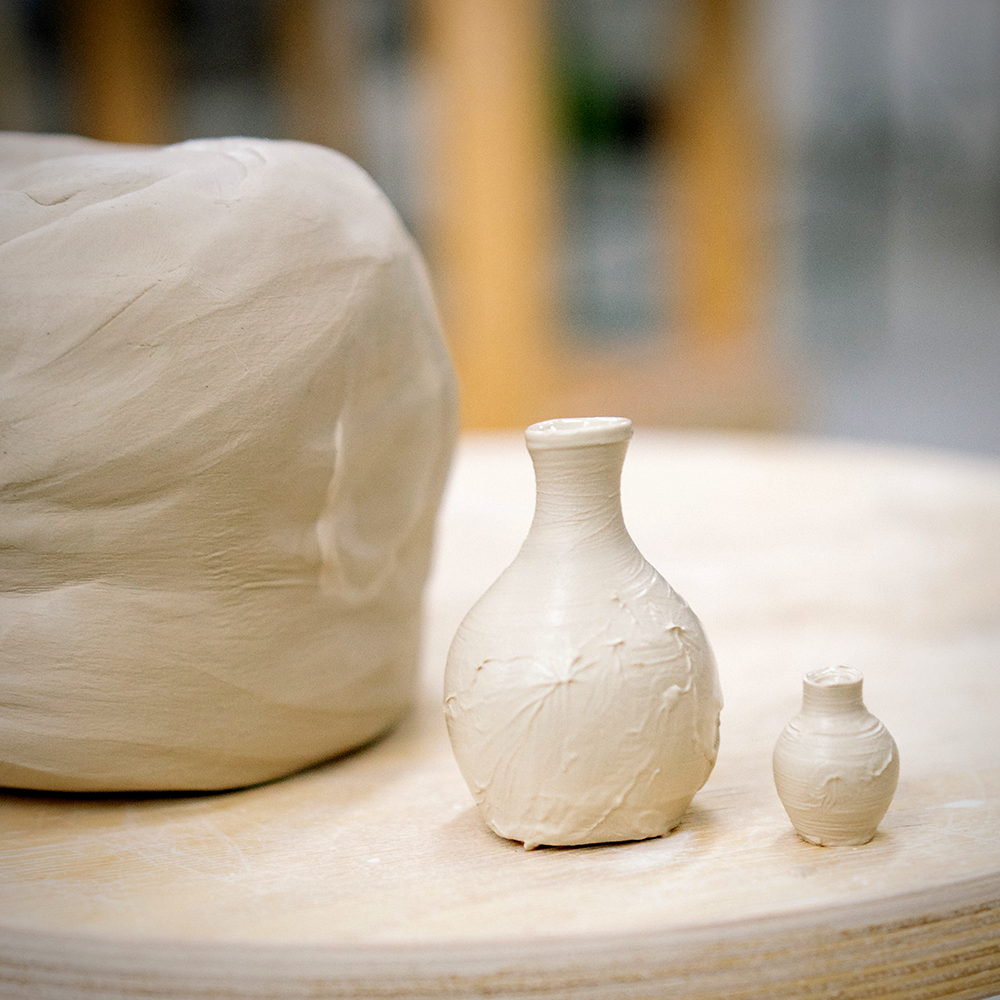
The Firing Process: A Crucial Step
Once a piece is built, it must be dried and fired in a kiln.
The firing process is critical, as it transforms the soft clay into a hard, durable material.
The challenge here is to ensure that the piece dries evenly to prevent warping or cracking.
Additionally, understanding the different firing temperatures and atmospheres is essential for achieving the desired finish on the pottery.
Kilns: The Heart of Pottery Making
The kiln is where the magic happens. It's where the transformation from clay to ceramic takes place.
There are different types of kilns, from electric to gas to wood-fired, each offering a unique impact on the final piece.
The choice of kiln can influence the color, texture, and strength of the pottery, making it an integral part of the handbuilding process.
The Learning Curve for Beginners
For beginners, handbuilding pottery can seem daunting.
However, the learning curve is a natural part of the process.
Starting with simple ceramics projects and gradually moving to more complex forms allows for a steady acquisition of skills.
Many potters find that the tactile experience of working with clay is both therapeutic and rewarding.
Pottery Classes: A Path to Mastery
Pottery classes are an excellent way for beginners to get started.
They provide structured learning, allowing students to build their knowledge and skills in a supportive environment.
Classes often cover the basic principles of handbuilding, as well as glazing and firing techniques.
With time and dedication, even those new to pottery can create beautiful hand built pieces.

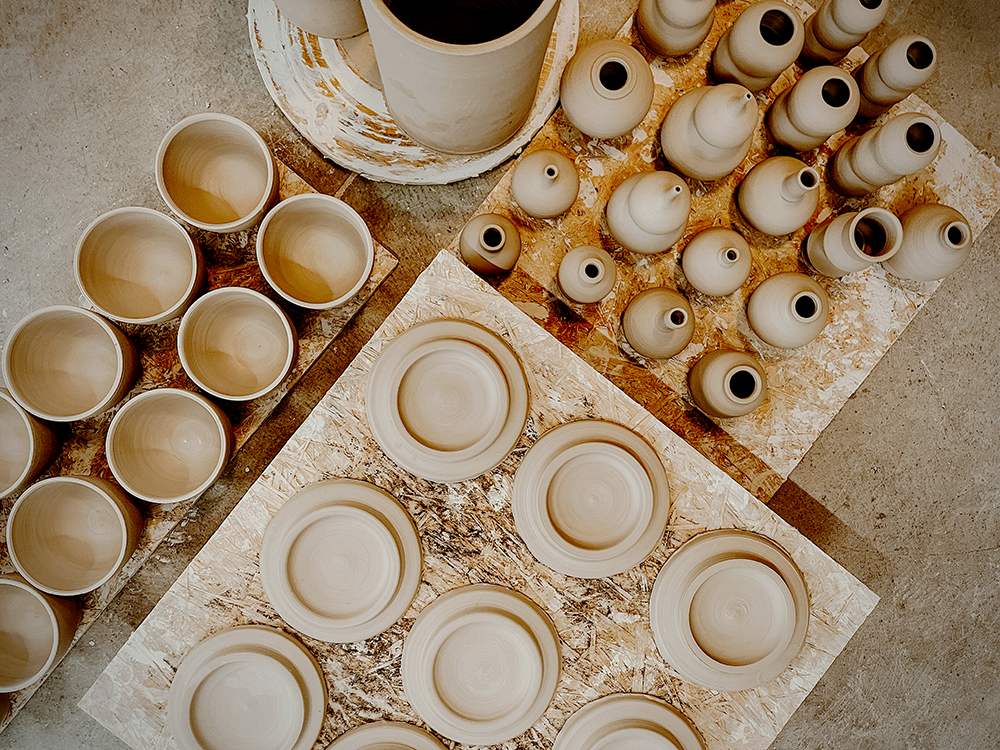
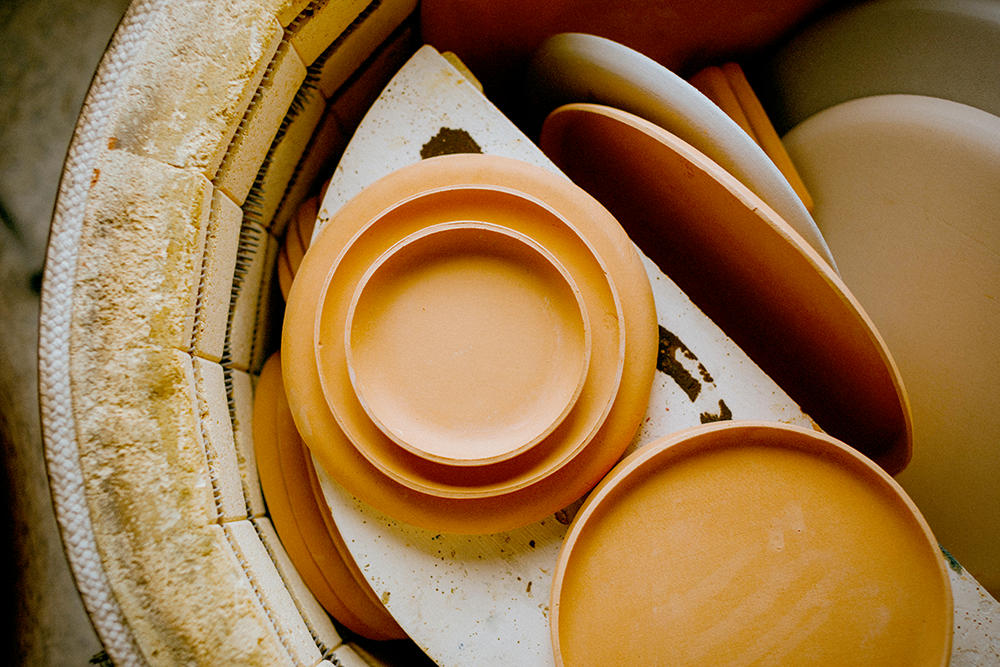
Handbuilding – A Versatile and Rewarding Art
Handbuilding offers endless possibilities for the creation of functional and artistic pottery pieces.
It is a craft that balances simplicity with complexity.
While it is accessible to beginners, achieving mastery requires patience, practice, and a deep understanding of the materials and techniques involved.
The various hand building techniques, from pinch pots to slab construction, offer a range of possibilities for creative expression.
The challenges faced during the handbuilding process, such as maintaining even walls and preventing cracking, are part of the learning journey.
With the right approach and guidance, anyone can discover the joys of creating pottery by hand.
So, go ahead, unleash your creative side, and give it a try!
Who knows, you may uncover a hidden talent and fall in love with the world of clay!

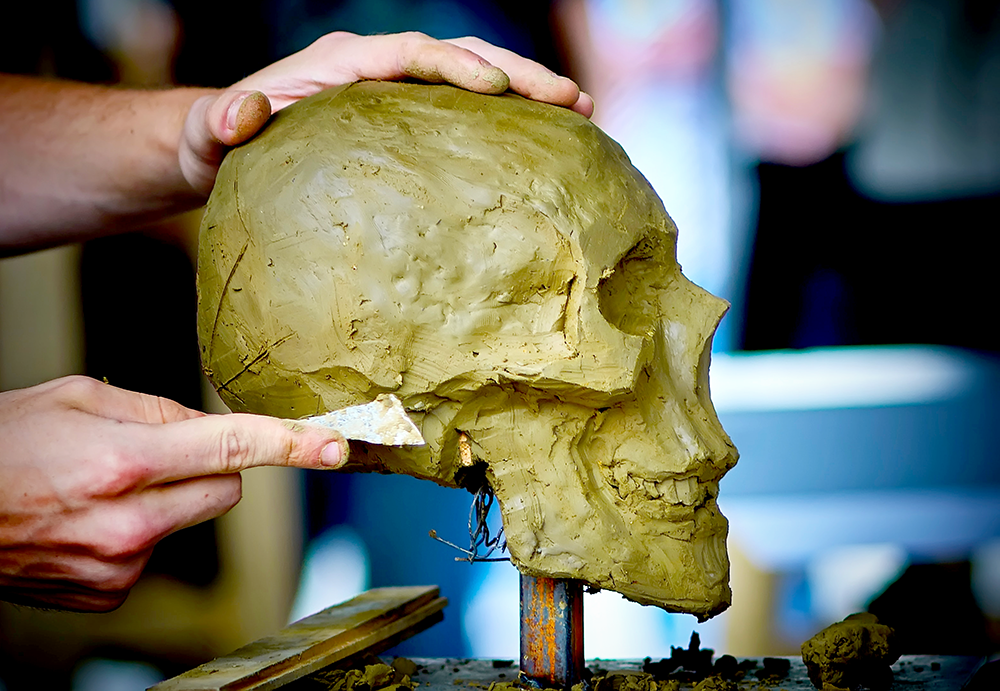

Handbuilding Pottery FAQs
Handbuilding pottery may seem intimidating for beginners.
To help ease some of your concerns, here are answers to frequently asked questions about handbuilding.
Is handbuilding pottery suitable for beginners?
Yes, handbuilding pottery is suitable for beginners. It is a great way to learn the basics of working with clay and can be done with minimal tools and equipment.
What are the main techniques used in handbuilding pottery?
The main techniques in handbuilding pottery are pinch pots, coil building, and slab construction. Each technique offers different possibilities for shapes and textures.
How does handbuilding differ from wheel throwing?
Handbuilding involves shaping clay using only hands and simple tools, allowing for a wide range of forms. Wheel throwing, on the other hand, requires a pottery wheel and is typically used to create symmetrical, round objects.


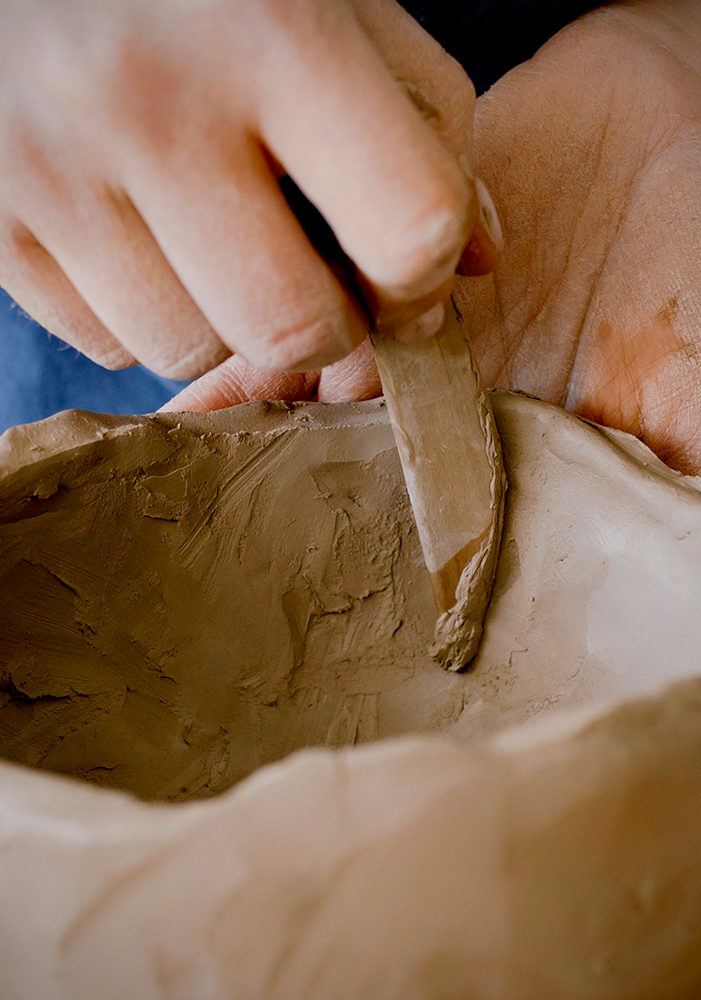
Eager to learn more about working with clay and handbuilding? Check out Fugli's video!
Want even more content about creativity and art?
Be sure to check out all of our creative chronicles!
Love pottery and working with clay?
Check out some of our other ceramic articles:
